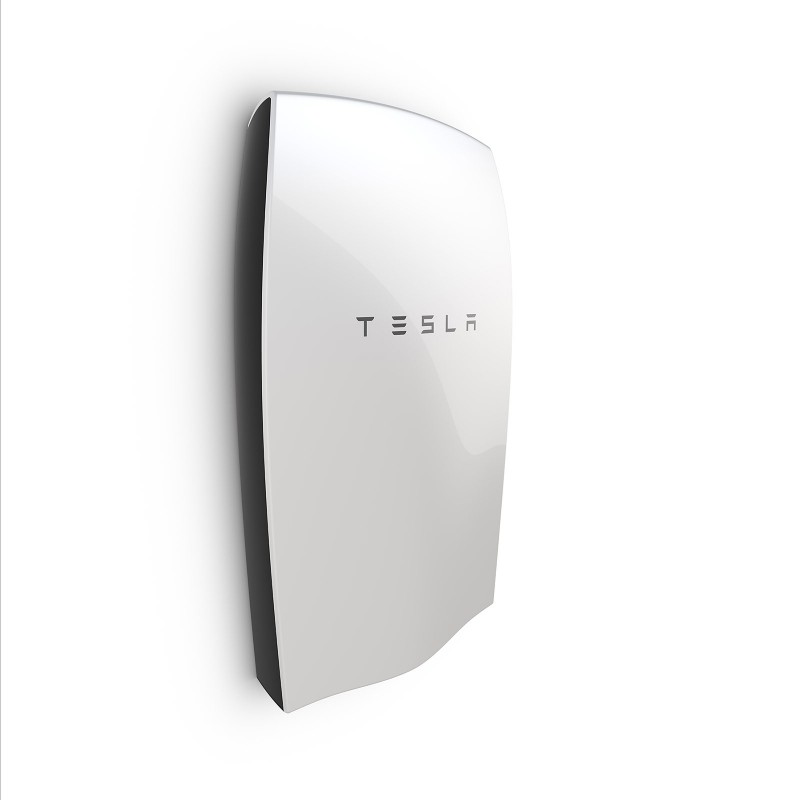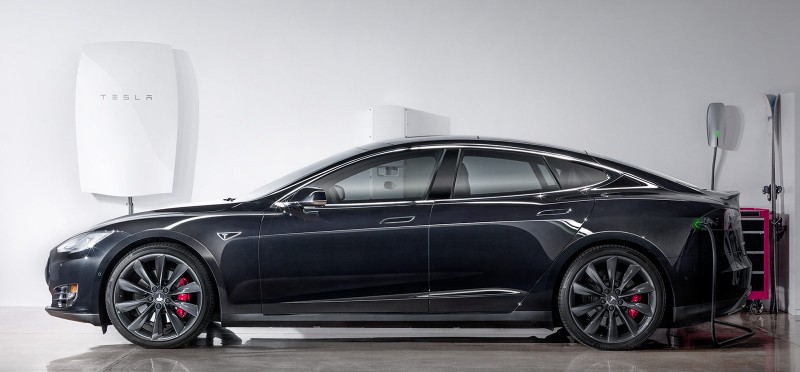In our current issue and interview with Dale Vince, founder and CEO of Ecotricity, we discussed the potential of their Black Box – a device that would enable a home to be grid independent at times of peak network use. This would help take strain from the power grid and, for those with solar panels, enable them to make better use of energy created from their own sources. This is more efficient than merely sending the power direct to the grid, which might not need it during the day when it is produced. To date, Ecotricity have not yet made any major announcements about their Black Box but developments are currently ongoing.
In America, Tesla Motors, a company now infamous for their ideals and electric cars alike, have today announced their latest product and it isn’t a car this time. Instead, it is called the Powerwall. It is, essentially, an off-grid storage device, much like the Black Box Ecotricity have proposed. Tesla have announced a suite of products they’re calling Tesla Energy – a direct nod to Nikola Tesla and his aspirations to provide the world with free, clean and safe energy, although we doubt the modern Tesla Motors will want to give it away for free.
With Elon Musk at Tesla’s helm, it is not too surprising the company is getting into energy. Musk is Chairman of SolarCity, an American company providing energy services. From the press release:
Of all the fossil fuel consumed in the United States, one third is used in transportation and another third goes to electricity production. The US electric power sector alone produces over 2,000 million metric tons of CO2 which is like burning 225 billion gallons of gas. The EPA says it would require 1.6 billion acres of US forest to negate the environmental damage.
Once we’re able to rely on renewable energy sources for our power consumption, the top 50% of the dirtiest power generating sources could be retired early. The result would be a cleaner, smaller, and more resilient energy grid.
With Tesla Energy, Tesla is amplifying its efforts to accelerate the move away from fossil fuels to a sustainable energy future with Tesla batteries, enabling homes, business, and utilities to store sustainable and renewable energy and manage power demand, provide backup power and increase grid resilience.
Tesla is already working with utilities and other renewable power partners around the world to deploy storage on the grid to improve resiliency and cleanliness for the grid as a whole.
Powerwall Home Battery
The Tesla Powerwall is a rechargeable lithium-ion battery designed to store energy at a residential level for load shifting, backup power and self-consumption of solar power generation. The Powerwall consists of Tesla’s lithium-ion battery pack, liquid thermal control system and software that receives dispatch commands from a solar inverter. The wall mounted unit integrates with the local power grid to harness excess power and give customers the flexibility to draw energy from their own reserve.
The battery can provide a number of different benefits to the customer including:
- Load shifting – The battery can provide financial savings to its owner by charging during low rate periods when demand for electricity is lower and discharging during more expensive rate periods when electricity demand is higher
- Increasing self-consumption of solar power generation – The battery can store surplus solar energy not used at the time it is generated and use that energy later when the sun is not shining
- Back-up power – Assures power in the event of an outage
The Powerwall Home Battery increases the capacity for a household’s solar consumption, while also offering backup functionality during grid outages.
The Powerwall is available in 10kWh, optimized for backup applications or 7kWh optimized for daily use applications. Both can be connected with solar or grid and both can provide backup power. The 10kWh Powerwall is optimised to provide backup when the grid goes down, providing power for your home when you need it most. When paired with solar power, the 7kWh Powerwall can be used in daily cycling to extend the environmental and cost benefits of solar into the night when sunlight is unavailable.
Tesla’s selling price to installers is $3,500 (~£2,290) for 10kWh and $3,000 (~£1,965) for 7kWh. (Price excludes inverter and installation.) Deliveries begin in late summer, in the US. Plans are for Powerwall to be available in the UK before for the end of the year with more details to follow.
Powerwall specs:
- Mounting: Wall Mounted Indoor/Outdoor
- Inverter: Pairs with growing list of inverters
- Energy: 7kWh or 10kWh
- Continuous Power: 2kW
- Peak Power: 3kW
- Round Trip Efficiency: >92%
- Operating Temperature Range: -20C (-4F) to 43C (110F)
- Warranty: 10 years
- Dimensions: H: 1300mm W: 860mm D:180mm
Source; Tesla


